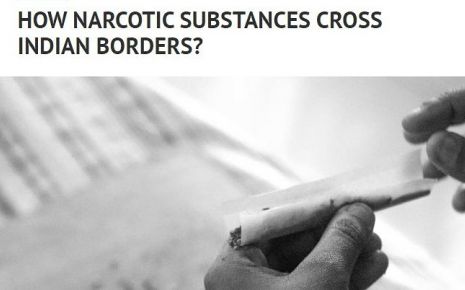White-Collar crimes in India and its relationship with other crimes
Corruption, fraud, and bribery are some of the most common white collar
crimes in India as well as all over the world. Cybercrimes are increasing
because there is only a little risk of being caught or apprehended. India's rank
on Transparency International's corruption perception index (CPI) has improved
over the years.
In 2014, India was ranked 85th which subsequently improved to 76th position in 2015 because of several measures to tackle white collar crimes. In 2018, as per the report of The Economic Times, India was placed at 78th position, showing animprovement of three points from 2017, out of the list of 180 countries.
India is a developing country and white collar crimes are becoming a major cause for its under development along with poverty, health, etc. The trend of white collar crimes in India poses a threat to the economic development of the country. These crimes require immediate intervention by the government by not only making strict laws but also ensuring its proper implementation.
White-collar crime is a non-violent crime where the primary motive is typically financial in nature. White-collar criminals usually occupy a professional position of power and/or prestige, and one that commands well above average compensation.
(The Prevention of Money Laundering Act, 2002 (PMLA) is the cornerstone of India's legal system, which was established to prevent white-collar crime and fight money laundering)
Introduction
White collar crime is a type of crime committed by persons from upper-class backgrounds who are members of a recognized social group these crimes are perpetrated as a result of their employment.
People that perpetrate this crime often have a superior awareness of the people they are working with technology their area disciplines and so on.
White collar crime has developed dramatically overtime these crimes are committed in massive organizations that engage in a variety of activities these crimes are typically committed in industries such as trade, business, health, education and a variety of organization
Offences a whole can be classified as conventional crimes and non conventional crimes. Conventional crimes are those traditional, illegal behaviors that most people think of as crime which includes murder, rape, assault, robbery, burglary and theft. Most crime is conventional crime. Non-conventional crime, may be White-Collar Crime, Blue-collar Crime, Pink-collar Crime, Political Crime, Corporate Crime, Occupational Crime etc. In non-conventional crimes there is an absence of mens rea.
Historical Background
Since sociologist Sir Edwin Sutherland first characterized white-collar crime in 1939, it has been associated with clever, educated, and rich individuals. He characterized them as "a crime done in the course of one's employment by persons of respectability of high social rank". He stated that wrongdoer is someone who has been interested with a great deal of faith and trust, and that perpetrators of this crime are those who have been entrusted with a great deal of faith and trust.
Related to the corporate sector white collar crimes are defined as nonviolent crimes, committed by businessmen and government professionals. In simple words, crimes committed by people who acquire important positions in the company are called white collar crimes.
It is stated that crimes have existed since human beings first begin to live together. There are a variety of crimes that have evolved over time, including some that have taken on new aspects as a society has become more Contemporary. According to an ancient Vedic book, the notion of white collar crime has been in civilization from the dawn of time.
These worked for a low wage on an hourly basis.
White collar crimes have been prevalent since centuries and it is not new to all types of businesses, professions and industries.
New v/s Traditional
Where blue-collar crimes refer to traditional crimes that have been committed since ages, the concept of white collar crimes has recently developed. It's a new species of crime.
Mens rea
To constitute a crime element of mens rea and actus reus is must. Where mens rea is an essential element of blue collar crimes, its involvement in white collar crimes is not necessary.
Involvement of politicians
In many cases it has been found that the offenders have strong connections with politicians and sometimes, politicians are also involved in committing the crime thus making it difficult for the victims to take action against such offenders.
Causes of white collar crime
The satisfaction of one's ego:
Coleman and Moynihan pointed out that Edwin Sutherland's definition had certain ambiguous terms. It has not laid down any criteria for who these 'persons of responsibility and status' would be.
Also 'person of high social status' is not clear. It is perplexing as the meaning of the phrase in law could be different from its general definition.
Sutherland's definition did not take the socio-economic condition of the person into consideration. It only showed the dependency of white collar crimes on its type and the circumstances in which it was committed.
Mens rea, i.e. guilty mind and actus reus, i.e., wrongful conduct are two essential elements to constitute a crime.
However, Sutherland's definition implies that according to him white collar crimes does not necessarily require mens rea.
What are the Punishments for White-Collar Crime in India
The Constitution of India provides the following provisions for sentencing white-collar criminals.
Case laws
Kanwarju Singh Kakkar v. State of Punjab
The Supreme Court of India in Kanwarju Singh Kakkar v. State of Punjab and Anr, has held that the demand or receipt of fee by a medical professional for extending medical help by itself cannot be held to be an illegal gratification as the amount so charged is towards professional remuneration. So the offence u/s 168, IPC cannot be said to have been made out as the treatment of patients by a doctor cannot by itself be held to be engagement in a trade. However, the said act may fall within the ambit of misconduct to be dealt with under the Service Rules.
State of Gujarat v. Mahesh Kumar Dheerajlal Thakka,
the Supreme Court has held that private practice" cannot be termed as 'trade' as accepting of 'fee' does not involve profit making, which is an essential ingredient of the term "trade".
So we may conclude that if public servants were allowed to engage in trade they would not be able to devote their undivided attention to their official work.
Conclusion
White- collar crimes have two surprising features, first, that they are non-violent crimes, though the criminals have the tendency to gain control or have a sense of entitlement, and, second, that they are committed by people in the higher profession.
White collar crimes are frequently unreported, and the media may play an essential role in this area by becoming more active in publicizing and exposing scams and frauds, as well as making efforts to educate the public about white collar crimes and the fines and penalties associated with them. As a result, the government should not be tolerant when it comes to social-economic offences. To reduce the rate of white collar crime in India, appropriate legislation and strong restrictions should be enacted.
However, similar crimes are also perpetrated by low-paid underlings, even if the mastermind behind the crime is a wealthy individual with a higher social rank in his profession. White collar crimes are frequently perpetrated as a result of peer pressure or as a result of the company's culture.
The government must make laws that are strict enough to reduce the commission of such crimes. And the system should be such that not only there exist laws giving strict punishment to the accused but also dispose off maximum cases in a short while.
As our civilization progresses toward modernity and the globe gains new technical advancements, the rate of crime rises at a quicker pace. The increase in white collar crime, in particular, has been significant. These crimes are done everywhere, from the medical profession to educational institutions.
If the media becomes more active towards publishing frauds and scams at higher levels and revealing how do the people at higher position in a company use their powers arbitrarily, and also make efforts in making people aware about the white collar crimes, and avoid corrupt practices, then this would definitely help in reducing the rate at which the white collar crimes are being committed.
In 2014, India was ranked 85th which subsequently improved to 76th position in 2015 because of several measures to tackle white collar crimes. In 2018, as per the report of The Economic Times, India was placed at 78th position, showing animprovement of three points from 2017, out of the list of 180 countries.
India is a developing country and white collar crimes are becoming a major cause for its under development along with poverty, health, etc. The trend of white collar crimes in India poses a threat to the economic development of the country. These crimes require immediate intervention by the government by not only making strict laws but also ensuring its proper implementation.
White-collar crime is a non-violent crime where the primary motive is typically financial in nature. White-collar criminals usually occupy a professional position of power and/or prestige, and one that commands well above average compensation.
(The Prevention of Money Laundering Act, 2002 (PMLA) is the cornerstone of India's legal system, which was established to prevent white-collar crime and fight money laundering)
Introduction
White collar crime is a type of crime committed by persons from upper-class backgrounds who are members of a recognized social group these crimes are perpetrated as a result of their employment.
People that perpetrate this crime often have a superior awareness of the people they are working with technology their area disciplines and so on.
White collar crime has developed dramatically overtime these crimes are committed in massive organizations that engage in a variety of activities these crimes are typically committed in industries such as trade, business, health, education and a variety of organization
Offences a whole can be classified as conventional crimes and non conventional crimes. Conventional crimes are those traditional, illegal behaviors that most people think of as crime which includes murder, rape, assault, robbery, burglary and theft. Most crime is conventional crime. Non-conventional crime, may be White-Collar Crime, Blue-collar Crime, Pink-collar Crime, Political Crime, Corporate Crime, Occupational Crime etc. In non-conventional crimes there is an absence of mens rea.
Historical Background
Since sociologist Sir Edwin Sutherland first characterized white-collar crime in 1939, it has been associated with clever, educated, and rich individuals. He characterized them as "a crime done in the course of one's employment by persons of respectability of high social rank". He stated that wrongdoer is someone who has been interested with a great deal of faith and trust, and that perpetrators of this crime are those who have been entrusted with a great deal of faith and trust.
Related to the corporate sector white collar crimes are defined as nonviolent crimes, committed by businessmen and government professionals. In simple words, crimes committed by people who acquire important positions in the company are called white collar crimes.
It is stated that crimes have existed since human beings first begin to live together. There are a variety of crimes that have evolved over time, including some that have taken on new aspects as a society has become more Contemporary. According to an ancient Vedic book, the notion of white collar crime has been in civilization from the dawn of time.
Difference between white collar crime and blue-collar crime
The term 'blue collar crime' came into existence some time in the 1920s. The term was then used to refer to Americans who performed manual labor.These worked for a low wage on an hourly basis.
White collar crimes have been prevalent since centuries and it is not new to all types of businesses, professions and industries.
The difference between 'blue collar crimes', which are crime of a general nature
'White collar crimes' was laid down by the Supreme Court of India in the case of State of Gujarat v. Mohanlal Jitamalji Porwal and Anr. Justice Thakker elucidated that one person can murder another person in the heat of the moment, but causing financial loss or say committing economic offences requires planning. It involves calculations and strategy making in order to derive personal profits.These are the characteristics of white collar crimes which distinguish it from other crimes of general nature:
Blue-collar crimes refer to people who work physically, using their hands, whereas white collar crimes refer to knowledgeable works, who use their knowledge to commit crimes.New v/s Traditional
Where blue-collar crimes refer to traditional crimes that have been committed since ages, the concept of white collar crimes has recently developed. It's a new species of crime.
Mens rea
To constitute a crime element of mens rea and actus reus is must. Where mens rea is an essential element of blue collar crimes, its involvement in white collar crimes is not necessary.
Independent of social and personal conditions
White collar crimes have no relation with the social conditions, like poverty, or personal conditions of the offender albeit it matters in the conventional nature of crimes.Involvement of politicians
In many cases it has been found that the offenders have strong connections with politicians and sometimes, politicians are also involved in committing the crime thus making it difficult for the victims to take action against such offenders.
Causes of white collar crime
- Lack of Awareness:
Because white-collar crimes differ from typical crimes in their method, victims frequently misunderstand them and are readily duped by offenders. - Greed:
Because white-collar crimes differ in strategy from traditional crimes, victims usually misunderstand them and are easily fooled by perpetrators. - Not a really a crime:
Because these activities lack the violent characteristics that define typical crimes, the perpetrators or offenders frequently convince themselves that they are not crimes. - Necessity:
Not generally, but occasionally, such crimes are committed as a last alternative to overcome financial difficulties in sustaining their families.
The satisfaction of one's ego:
- The offenders often commit such acts to satisfy their ego and impulse.
- The lack of proper implementation of laws in this regard
- The inability to enforce existing rules in a stringent manner frequently leads to the emergence of such activities.
Coleman and Moynihan pointed out that Edwin Sutherland's definition had certain ambiguous terms. It has not laid down any criteria for who these 'persons of responsibility and status' would be.
Also 'person of high social status' is not clear. It is perplexing as the meaning of the phrase in law could be different from its general definition.
Sutherland's definition did not take the socio-economic condition of the person into consideration. It only showed the dependency of white collar crimes on its type and the circumstances in which it was committed.
Mens rea, i.e. guilty mind and actus reus, i.e., wrongful conduct are two essential elements to constitute a crime.
However, Sutherland's definition implies that according to him white collar crimes does not necessarily require mens rea.
Types Of White-Collar Crime
- Fraud
Fraud is a broad term that encompasses several different schemes used to defraud people of their money. One of the most common and simplest is the offer to send someone a lot of money (say, $10,000) if they will simply send the fraudster a little money (say, $300 - the fraudster may represent the smaller sum as being a processing or finder's fee). Of course, the fraudster gets the money that is sent to him but never sends out the money he promised to send.
- Insider trading
Insider trading is trading done with the benefit of the trader possessing material, non-public information that gives him or her an advantage in the financial markets.
Insider trading can be either unlawful or legal, depending on when the incident or transaction occurred.
The sensitive information discussed in the definition of insider trading is knowledge relating to the company's private and confidential affairs that has been kept a secret for whatever reason, unknown to lower-level management.
Insider trading is the activity of exchanging securities by someone with substantial non-public information about a company's security or critical operations. Insider trading can be either unlawful or legal, depending on when the incident or transaction occurred.
- Identity theft and other cybercrimes
Identity theft and computer system "hacking" are two of the most widespread computer crimes. As the use of computer and internet is increasing, so is the crime related to it. The crimes which involves the use of computer, coupled with the use of internet are called cybercrime.
It is where the computer is used as the object of the crime or as a tool to commit an offence.
Categories of cybercrime Property, individual, government etc
- Embezzlement
Embezzlement is a crime of theft, or larceny, that can range from an employee taking a few dollars out of a cash drawer to a complex scheme to transfer millions from a company's accounts to the embezzler's accounts.
- Counterfeiting
Money has become more colorful and expanded in detail because it had to in order to combat counterfeiting. With today's computers and advanced laser printers, the old currency was just too easy to copy.
- Money laundering
Money laundering is a service essential to the needs of criminals who deal with large amounts of cash. It involves funneling the cash through several accounts and eventually into legitimate businesses, where it becomes intermingled with the genuine revenues of the legitimate business and is no longer identifiable as having originally come from the commission of a crime.
- Bank fraud
Bank fraud can be committed in two ways:
- By using illegal means to withdraw money or assets from the bank or any financial institution.
- By falsely representing oneself to be a bank or any financial institution, the person extracts money or assets from people.
What are the Punishments for White-Collar Crime in India
The Constitution of India provides the following provisions for sentencing white-collar criminals.
- Punishment for a False Statement
Section 448 of the Companies Act 2013 mentions that an individual who deliberately makes a false statement or knowingly confides in any fact will be held liable.
- Punishment for Fraud
Section 447 of the Companies Act 2013 penalises the act of fraud. If a person is found guilty of committing fraud, he will face imprisonment from 6 months to 10 years. The fraudulent party must also pay a fine equal to or three times more than the fraud amount.
In case of fraud committed against the general public, imprisonment shall not be less than three years.
Case laws
Kanwarju Singh Kakkar v. State of Punjab
The Supreme Court of India in Kanwarju Singh Kakkar v. State of Punjab and Anr, has held that the demand or receipt of fee by a medical professional for extending medical help by itself cannot be held to be an illegal gratification as the amount so charged is towards professional remuneration. So the offence u/s 168, IPC cannot be said to have been made out as the treatment of patients by a doctor cannot by itself be held to be engagement in a trade. However, the said act may fall within the ambit of misconduct to be dealt with under the Service Rules.
State of Gujarat v. Mahesh Kumar Dheerajlal Thakka,
the Supreme Court has held that private practice" cannot be termed as 'trade' as accepting of 'fee' does not involve profit making, which is an essential ingredient of the term "trade".
So we may conclude that if public servants were allowed to engage in trade they would not be able to devote their undivided attention to their official work.
Conclusion
White- collar crimes have two surprising features, first, that they are non-violent crimes, though the criminals have the tendency to gain control or have a sense of entitlement, and, second, that they are committed by people in the higher profession.
White collar crimes are frequently unreported, and the media may play an essential role in this area by becoming more active in publicizing and exposing scams and frauds, as well as making efforts to educate the public about white collar crimes and the fines and penalties associated with them. As a result, the government should not be tolerant when it comes to social-economic offences. To reduce the rate of white collar crime in India, appropriate legislation and strong restrictions should be enacted.
However, similar crimes are also perpetrated by low-paid underlings, even if the mastermind behind the crime is a wealthy individual with a higher social rank in his profession. White collar crimes are frequently perpetrated as a result of peer pressure or as a result of the company's culture.
The government must make laws that are strict enough to reduce the commission of such crimes. And the system should be such that not only there exist laws giving strict punishment to the accused but also dispose off maximum cases in a short while.
As our civilization progresses toward modernity and the globe gains new technical advancements, the rate of crime rises at a quicker pace. The increase in white collar crime, in particular, has been significant. These crimes are done everywhere, from the medical profession to educational institutions.
If the media becomes more active towards publishing frauds and scams at higher levels and revealing how do the people at higher position in a company use their powers arbitrarily, and also make efforts in making people aware about the white collar crimes, and avoid corrupt practices, then this would definitely help in reducing the rate at which the white collar crimes are being committed.
Award Winning Article Is Written By: Ms.Yashika Malhotra
Authentication No: MY312267567124-2-0523
Law Article in India
Legal Question & Answers
Lawyers in India - Search By City
LawArticles
How To File For Mutual Divorce In Delhi

How To File For Mutual Divorce In Delhi Mutual Consent Divorce is the Simplest Way to Obtain a D...
Increased Age For Girls Marriage

It is hoped that the Prohibition of Child Marriage (Amendment) Bill, 2021, which intends to inc...
Facade of Social Media

One may very easily get absorbed in the lives of others as one scrolls through a Facebook news ...
Section 482 CrPc - Quashing Of FIR: Guid...

The Inherent power under Section 482 in The Code Of Criminal Procedure, 1973 (37th Chapter of t...
The Uniform Civil Code (UCC) in India: A...

The Uniform Civil Code (UCC) is a concept that proposes the unification of personal laws across...
Role Of Artificial Intelligence In Legal...

Artificial intelligence (AI) is revolutionizing various sectors of the economy, and the legal i...







Please Drop Your Comments